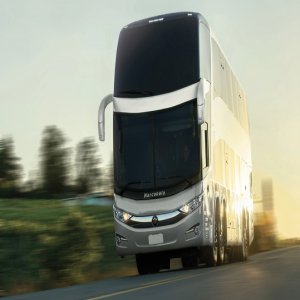Sealing the Future by Sticking with the Best

STORY INLINE POST
Q: What advancements has Henkel made toward improving the company’s adhesives portfolio?
A: The improved, lighter, and cost-effective materials currently popular in the automotive industry present new bonding challenges, such as new lightweight plastics that are difficult to bond. Therefore, our adhesive solutions for the interiors segment, the Loctite® and Teroson® brands, have adapted to keep improving their performance. Traditionally, for gasketing and sealing applications in the powertrain segment, silicones and anaerobic technologies have always been the solution. Nowadays, Henkel is able to offer higher flexibility in anaerobics, better adhesion to aluminum, and improved chemical and thermal resistance, boosting the performance of the powertrain. However, considering the current requirements such as the use of aggressive oils and coolants, there is demand for high resistance and performing sealants. For this reason, Henkel has developed the polyacrylate technology that offers benefits as best-in-class chemical and oil resistance, as well as good adhesion to plastic and metals.
Q: Weight reduction has been a priority for Henkel, but how do Henkel’s solutions help OEMs achieve this goal?
A: Our products account for average reductions of up to 98kg per vehicle due to several technologies. However, it is not about weight reduction as such. For example, when an OEM includes a larger proportion of lighter materials, we can pretreat these materials so that higher quantities can be used. We have another two-step technology where we first pretreat the galvanized steel and then the aluminum. This technology reduces waste and sludge, offers better corrosion protection, and eases weight reduction efforts. Additionally, we ensure that our adhesives help OEMs maintain safety, comfort, and performance levels when making structural changes to reduce weight. We developed structural adhesives for the doors, roof, and hood to ensure the cars keep the same strength with less weight.
We have a technology called Liquid Applied Sound Deadener (LASD), which is applied to the floor of the vehicle. This product is directly applied by a robot that dispenses it in the shape of the vehicle. This equipment allows LASD to be applied uniformly, eliminating the need to have tailor made parts that must be applied to each individual model. This process results in less material applied overall by being dosed precisely at the most strategic places.
Additionally, we have applications for doors that have several metals welded together. Companies do not want these metals clashing against each other, so we apply antiflutter material that can expand and fill the gap according to the shape of the door. This technology allows companies to reduce the amount of metal used while maintaining comfort and noise reduction.
Q: What kind of challenges has Henkel faced when creating new bonding and adhesives solutions?
A: Henkel is working with Audi to develop a fully bonded car, free of welding. This innovation would be the ultimate solution, which could be deployed for any combination of aluminum and galvanized steel. Bonding is interesting as the same force is applied evenly to the surface, as opposed to welding which has contact points where the force is concentrated. In the future, we might see fully bonded metal vehicles, or even some made out of magnesium, plastics, or carbon fiber resins, as seen in Formula 1 cars.
When dealing with powertrain, transmission, or engine components we know that every part is different. Therefore, we can preprogram robots or PLC’s with the exact dimensions of each part in a car so that the adhesive can be applied rapidly, uniformly and without worrying about the size and shape of different parts.
Q: One of Henkel’s newer products is electro ceramic coatings. How does this product help improve engine performance and reduce CO2 emissions?
A: We are applying these electro ceramic coatings to pistons, increasing corrosion resistance and reducing friction. If we can reduce the latter by 3-5% on the pistons, the result is almost like adding a supercharger to the car. This technology also prevents damage to the engine and improves savings on fuel consumption. We are in the final trials for this process in collaboration with Honda and other piston manufacturers, to ensure that these materials are reliable in the long run. While electroceramic coatings are more expensive, this investment translates into big savings when it comes to engine performance.
Q: How does your R&D strategy differ for cleaning products as opposed to the rest of your materials?
A: Our latest developments are neutral cleaners that stand between acids and alkaline. They offer a big advantage as they do not damage parts. The mix of metals and materials that will be used in the cars of the future makes it more important to have neutral cleaners that will not damage any part or the properties of any material apart from giving rust protection. Henkel Mexico adapts products to the local market in partnership with local suppliers to make them as competitive as possible. For example, we are improving our line of cleaners and lubricants in Mexico, as well as the phosphate materials that we provide for use before painting. Therefore, while we have limited innovative R&D domestically, we count on Mexico to manufacture products and improve others in order to be more cost effective for our customers.























